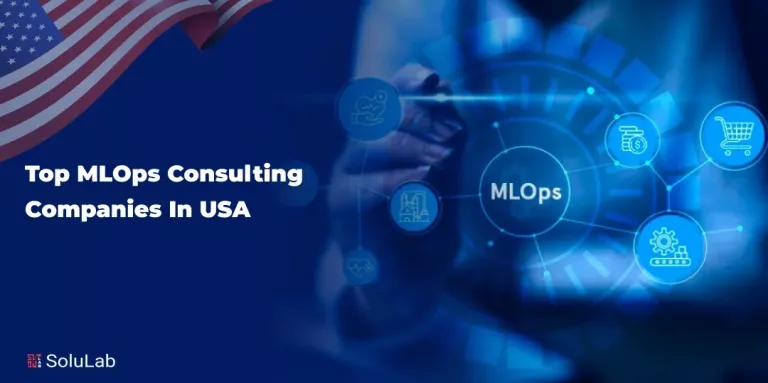
As a rule, enterprise AI platforms generate thousands of marketing copies, research summaries, and customer communications. Most probably, yours is not an exception. And, most probably, your team uses the advantages of modern AI tools to save time on research and idea generation. However, this productivity comes with a significant new risk called content integrity. One day, you can discover that a considerable part of your AI-generated content closely mirrors existing copyrighted material and exposes your organization to reputational damage.
The volume of material your team generates makes manual review hard, if at all possible. Still, the nature of large language models means they often give you text that is very similar to their training data. Is there a way out? The good news is that a reliable AI plagiarism checker might be the solution you are looking for. Enterprises today rely on this sophisticated defense system that can check not just for copy-paste, but for AI-generated text itself. The bad news is that it’s not easy to choose the right tool from a crowded marketplace where capabilities and accuracy vary dramatically.
To make this quest simpler for you, let’s explore a framework for evaluating and selecting a plagiarism checker that integrates seamlessly with your enterprise AI platform.
Why AI Changes the Plagiarism Game
What exactly has the emergence of AI writing tools changed in the way we approach content creation? The main point that immediately comes to mind is that it’s become more difficult to check the originality of every sentence you want to use in your projects.
Traditional plagiarism checkers do a great job at identifying exact word sequences and minor substitutions. However, modern AI models do not need to copy verbatim. They engage in content synthesis and rapidly generate text that is structurally and semantically similar to existing sources. Sometimes, they behave just like a student on a tight deadline who needs to write a paper and stitch together phrases from multiple sources. Even though this practice might seem acceptable, it is nonetheless a form of plagiarism.
What you get is a text that’s original in a purely technical sense but infringes upon the intellectual property of different authors. For an enterprise, this ambiguity is a legal and reputational ticking time bomb.
Therefore, the new threat is two-fold:
1. AI-generated plagiarism that looks like an unintentional reproduction of copyrighted material from the AI’s training data.
2. AI global plagiarism occurs when employees submit content that was fully generated by a public language model and passed off as their own original work.
For true content integrity, a chosen solution must effectively address both the “where” (source match) and the “how” (AI generation probability) of the text.
Key Features to Evaluate in an Enterprise-Grade Solution
Now, it’s time to look through the key factors that will influence your decision on which tool to use.
1. Technical Capabilities
Processing speed directly impacts the productivity of your team, which means that the tools you use should return results for standard documents within seconds, not minutes. In addition, pay attention to the ability to queue and process large batches overnight or during off-peak hours, as it adds valuable flexibility. Let’s analyze some more features you need to keep in mind.
2. AI Makes Mistakes
Your chosen solution should explicitly detect content from major AI models and distinguish between human-written, AI-generated, and AI-assisted content. At least, that’s the way these tools would function if we lived in an ideal world. Unfortunately, we don’t, and the biggest flaw of modern AI detectors is a high rate of false positives (flagging human-written text as AI-generated). Here’s how you can overcome this obstacle and choose a trustworthy checker:
- Look for AI plagiarism checkers that use linguistic and statistical patterns. The best tools are trained to identify subtle patterns common to specific writing tools like GPT-4, Gemini, Claude, etc.
- The tool should be resistant to humanizing techniques, which include lightly editing AI-generated text or running it through a paraphrasing tool.
3. Database and Content Coverage
Database size and coverage are the two characteristics that will help you determine how good or bad a tool can identify matching content. The best and most reliable enterprise solutions compare against billions of web pages and academic publications to eliminate all kinds of plagiarism risks:
- Vast public web index. A core requirement is access to a huge and continuously updated index of web pages, blogs, news articles, etc.
- Proprietary and academic databases. Enterprise solutions often partner with major academic publishers (like ProQuest) or have access to scholarly journal databases, which are vital for R&D or educational content.
- Internal document scanning. Critically, the checker must offer a secure way to scan new content against your organization’s internal knowledge base. Then, it becomes possible to protect proprietary documents and ensure that new content adheres to internal standards.
- Code repository check. The ability to scan code repositories for copyrighted snippets or unauthorized open-source use is a powerful feature, so you might check if it’s available.
4. Various File Formats
Make sure your plagiarism checker handles Word documents, PDFs, PowerPoint presentations, HTML, markdown, and potentially code files. Batch processing capabilities allow simultaneous checking of multiple files and can dramatically improve your team’s workflow efficiency.
5. Integration, Security, and Scalability
Architectural compatibility ensures you can integrate the chosen plagiarism checker into your technology ecosystem. Mind that some enterprises require on-premise deployment for security or compliance reasons. Nonetheless, you can always go for hybrid approaches, where processing occurs in the cloud but sensitive data never leaves your infrastructure:
- API and LMS integration. Seamless API access is mandatory for connecting the checker directly to your AI platform, CMS, development pipeline, or internal document systems. Educational organizations will require integration with Learning Management Systems like Canvas or Blackboard.
- Enterprise security and privacy. Given the sensitivity of enterprise content, the tool you choose must adhere to the highest security standards. Look for certifications such as SOC 2, SOC 3, and GDPR compliance to ensure data confidentiality.
- Scalability. The pricing model and infrastructure must support high-volume scans across thousands of users or large document batches.
Note that workflow automation possibilities multiply when your plagiarism checker integrates with broader automation platforms. Compatibility with tools like Zapier, Make, or enterprise iPaaS solutions allows you to check content before publication automatically and route reports to appropriate stakeholders.
6. Reporting and Usability
All that some checkers do is show you the percentage score of plagiarized content. As you understand, this information is not very helpful, as you don’t know what sentences to rewrite or what citations to include. That’s why the checker you will use needs to have these features:
- Reports should clearly delineate between exact matches, minor changes, and paraphrased/semantically similar text using color-coded highlights.
- The report must provide verifiable links to the original source material.
- Look for the best tools that offer two distinct scores: one for traditional plagiarism and a separate confidence score for AI generation.
Your Next Steps: A Practical Checklist
After you’ve created a shortlist of winning tools, here’s what you can do to ensure the implementation process runs smoothly:
#1 Define a Policy First
Transparency makes any process better. Therefore, draft a clear company policy on the acceptable use of generative AI and outline what constitutes plagiarism and the consequences.
#2 Run a Controlled Pilot
Test the chosen tool with a high-risk team. Then, evaluate its false-positive rate and reporting clarity using a mix of known human and AI-generated content.
#3 Ensure Seamless Integration
Use the API to integrate the checker into your company’s workflow.
#4 Provide Training
Train your employees on how to use the tool, but more importantly, how to interpret the reports.




